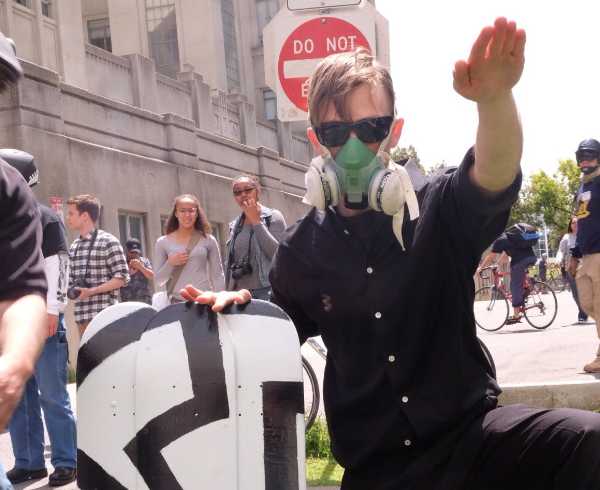ROMAN INVENTIONS
The movie ‘Quo Vadis’ was on TV last week. It is on TV fairly often. Like most movies about ancient Rome, Rome is ruled by a deranged emperor, Nero, and governed by corrupt incompetent administrators. The movie is nearly 3 hours of senseless bloodshed and destruction. But remember – Hollywood is in the entertainment business, not the education business. Violence makes movies exciting, and the Romans could be very violent, but the Romans also produced the greatest civilization of the ancient world, and they were the greatest inventors and engineers of ancient times. I have a lecture I give about this fairly often. If Rome was really run by bloodthirsty maniacs, it wouldn’t have survived for 1,000 years as the greatest empire of the ancient world. Here is my list of what I think were Rome’s greatest inventions (in no particular order.)
Newspapers. In ancient times, it was very hard for most people to find out what was going on in the world. Most ancient societies were run by autocrats, autocrats who liked to keep their people in the dark. On the other hand, Rome kept their people well informed by publishing a daily newspaper, the ‘Acta Diurna’ or ‘Daily Events.’ These were handwritten news sheets that were posted in public places where anyone could read them. The Acta Diurna was published every day for centuries. It was the world’s first and only daily newspaper. No other ancient society had newspapers.
Books. The Romans invented books. Before the Romans, written information was saved on scrolls or tablets made out of clay, wood, or stone. The Romans invented the ‘codex’. A codex had pages that were stacked on top of each other in a pile and were bound together one one side. Can you imagine what it would be like going to school with a pile of clay tablets in your bookbag?
Roman Numerals. Roman numerals allowed people to make complex calculations and work with large numbers. That had not been possible before using the numbering systems that were in common use elsewhere in the ancient world. There are problems with Roman numerals: the absence of a zero and the inability to calculate fractions, but nevertheless, the invention of Roman numerals was a huge improvement in doing math over what came before it. That’s why we still use Roman numerals.
Concrete. The invention of concrete by the Romans allowed them to build huge structures that could never have been built without it, like the Coliseum and the Pantheon. Concrete bridges built by the Romans 2,000 years ago are still in use by cars and trucks all over southern and central Europe. Our modern world depends on concrete. The foundation of nearly every house and skyscraper built in the U.S. over the past century is made from concrete, using the formula invented by the Romans 2,000 years ago. After the fall of Rome, the formula for concrete was lost and wasn’t rediscovered until the 1800s.
Arches. The arch was the other great invention besides concrete that allowed the Romans to build gigantic structures like the Coliseum, the aqueducts, elevated highways, and bridges that could not have been built without the arch. The great cathedrals of the Middle Ages could not have been built without arches.
Paved Highways. Before the Romans, roads were usually short, and they usually didn’t connect with the roads of other cities or nations. The Romans built over 50,000 miles of interconnecting paved roads, which were laid out in straight lines, connecting towns, cities, and ports that were far away from each other.
Law. The basic principles of modern law in nearly all industrialized nations go back to Rome. This is why so many of the terms used by lawyers and judges are still in Latin: habeas corpus, ad valorem, affidavit, bona fide, corpus delicti, de facto, et cetera, in absentia, per capita, subpoena, and vice versa. There are hundreds of Latin terms still in use in courtrooms and in legal contracts today.
Dams. The Romans built dams for water collection in many parts of their empire. They built over 70 dams just in Spain, some of which are still in use. Some dams were built for irrigation. Others were built to feed the aqueducts which brought water to Rome and other cities, cities that could not have been built or survived without the dams and aqueducts.
Glass. The Romans were centuries ahead of the rest of the world in glassmaking. Glassware is what the Romans traded with India for spices and precious stones and with China for silk and porcelain. Once the Romans got control of Egypt, trade with India increased greatly as the Romans could then get to India by sea.
Window Glass. Prior to Roman times, windows were just openings in walls designed to let sunlight in. On cold or windy days, people could cover their windows with wood shutters or animal hides, but that kept out the sunlight. The Romans did not invent glass; however, it was the Romans who figured out how to mass produce clear glass in flat sheets. This allowed the Romans to have windows with clear glass in them, making it possible for the first time for people to let sunlight in but keep the cold and the wind out. Before the Romans invented window glass, in cold weather, people had to choose between letting freezing cold wind blow through their homes (and perhaps rain and snow as well) or else live in near total darkness. Which would you have chosen? Think about that.
Surgical Tools & Medical Procedures. Roman doctors were famous throughout the ancient world and were in great demand in faraway places. Roman doctors invented many common medical procedures that are in use today, like cesarean section. The Romans also invented surgical tools that are still in use today, such as scalpels, bone drills, and forceps. The Romans also pioneered antiseptic surgery by cleaning wounds with boiled water and dipping their surgical tools in hot water before performing operations. This alone saved the lives of countless thousands of their patients. Sterilizing surgical instruments before operations did not become a standard medical procedure in the U.S. until after the Civil War.
Sewers and Public Sanitation. Rome had the highest level of sanitation of any city in the ancient world. The Romans developed public baths, flush toilets, and a network of underground sewers that carried away human waste. Before the Romans, most cities dealt with their human waste by just dumping it in a hole, where it mixed with the city’s drinking water. Many major cities in Europe still use underground sewers built by the Romans 2,000 years ago.
What other ancient civilization had a record of invention that could rival this? None!




















